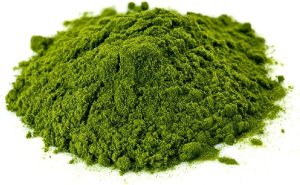
- Overview of Bioflavonoids
- Brief History of Bioflavonoids
- Functions of Bioflavonoids
- Recommended Daily Intake (RDI), Recommended Dietary Allowance (RDA), Adequate Intake (AI), or Reference Nutrient Intake (RNI) for Bioflavonoids
- Deficiency of Bioflavonoids
- Food Sources of Bioflavonoids and Where to Get It From
- Bioflavonoids and Its Interaction with Other Medications
- Websites and Articles to Delve into the Benefits of Bioflavonoids
- Disclaimer
Overview of Bioflavonoids
Bioflavonoids, also known as flavonoids, are a diverse group of plant compounds with antioxidant properties found in fruits, vegetables, tea, and red wine. These natural pigments contribute to the vibrant colors of many plants and offer various health benefits. Acting as potent antioxidants, bioflavonoids help neutralize free radicals, reducing oxidative stress and inflammation in the body. Some common bioflavonoids include quercetin, rutin, hesperidin, and catechins.
Research suggests that bioflavonoids may support cardiovascular health, improve immune function, and potentially reduce the risk of chronic diseases. Their role in promoting overall well-being underscores the importance of a balanced diet rich in colorful, plant-based foods to harness the diverse health benefits of bioflavonoids.
Brief History of Bioflavonoids
The history of bioflavonoids dates back to the early 20th century when Nobel laureate Albert Szent-Györgyi first isolated vitamin C in 1928. Later research revealed that certain compounds in citrus fruits, initially thought to be vitamin C, were actually bioflavonoids. In the 1930s and 1940s, bioflavonoids gained attention for their potential health benefits.
The term “flavonoid” was coined to describe these pigments, and subsequent research identified various subclasses with diverse properties. In the latter half of the 20th century, studies highlighted the antioxidant and anti-inflammatory effects of bioflavonoids.
Today, ongoing research continues to uncover the multifaceted roles of bioflavonoids in human health, emphasizing their significance in a balanced diet rich in fruits, vegetables, and other plant-based foods.
To ease understanding the history of bioflavonoids, we’d like to present it in a table format:
| Year | Milestone |
|---|---|
| 1928 | Albert Szent-Györgyi isolates vitamin C, later discovering bioflavonoids in citrus fruits. |
| 1930s-1940s | Recognition of compounds in citrus fruits as bioflavonoids, distinct from vitamin C. |
| 1950s-1960s | Coining of the term “flavonoid” to describe these plant pigments. |
| Late 20th Century | Research highlights antioxidant and anti-inflammatory properties of bioflavonoids. |
| Present | Ongoing research explores diverse roles of bioflavonoids in human health, emphasizing their importance in a plant-rich diet. |
This table provides a concise overview of key milestones in the discovery and understanding of bioflavonoids throughout history.
Functions of Bioflavonoids
Bioflavonoids, also known as flavonoids, serve various functions in the body and are associated with numerous health benefits. Here are some key functions of bioflavonoids:
- Antioxidant Activity:
- Bioflavonoids possess potent antioxidant properties, helping to neutralize free radicals in the body. This antioxidant activity helps protect cells from oxidative stress and damage.
- Anti-Inflammatory Effects:
- Many bioflavonoids have anti-inflammatory properties, which can contribute to reducing inflammation in the body. Chronic inflammation is associated with various diseases, and the anti-inflammatory effects of bioflavonoids may help support overall health.
- Support for Cardiovascular Health:
- Certain bioflavonoids, such as quercetin and rutin, are associated with cardiovascular benefits. They may help improve blood vessel function, reduce blood pressure, and lower the risk of heart disease.
- Immune System Support:
- Bioflavonoids, particularly quercetin, are known for their immune-modulating properties. They may help enhance the immune system’s response to infections and promote overall immune health.
- Vasoprotective Effects:
- Some bioflavonoids, like hesperidin, have vasoprotective effects, contributing to the health of blood vessels. This can be beneficial for conditions such as varicose veins and other circulatory issues.
- Anti-Cancer Properties:
- While research is ongoing, some studies suggest that certain bioflavonoids may have anti-cancer properties by influencing various cellular processes and pathways associated with cancer development.
- Antimicrobial Activity:
- Certain bioflavonoids exhibit antimicrobial properties, helping to inhibit the growth of bacteria, viruses, and fungi. This can contribute to the prevention of infections.
- Neuroprotective Effects:
- Some bioflavonoids, such as those found in berries, may have neuroprotective effects, potentially reducing the risk of neurodegenerative diseases and supporting cognitive function.
- Regulation of Enzyme Activity:
- Bioflavonoids can modulate enzyme activity, influencing various biochemical processes in the body.
- Estrogen Modulation:
- Certain bioflavonoids, particularly isoflavones found in soy, can interact with estrogen receptors, providing potential benefits for women’s health and hormonal balance.
It’s important to note that the specific functions of bioflavonoids can vary depending on their type and the sources from which they are derived. Consuming a diverse range of fruits, vegetables, and other plant-based foods is a recommended way to obtain a variety of bioflavonoids and harness their potential health benefits.
Recommended Daily Intake (RDI), Recommended Dietary Allowance (RDA), Adequate Intake (AI), or Reference Nutrient Intake (RNI) for Bioflavonoids
A diverse group of plant compounds known as bioflavonoids does not have a specific Recommended Dietary Allowance (RDA), Adequate Intake (AI), or Reference Nutrient Intake (RNI). Bioflavonoids are a diverse class of compounds, and there isn’t a standardized recommendation for their intake as there is for essential nutrients like vitamins and minerals.
Bioflavonoids are typically obtained through a diet rich in fruits, vegetables, tea, and other plant-based foods. The emphasis is generally on consuming a variety of colorful, plant-derived foods to ensure a broad spectrum of bioflavonoids.
Nutrient recommendations are often established for specific bioflavonoids, such as quercetin, rutin, or catechins found in tea. However, these recommendations can vary, and there isn’t a universally agreed-upon standard for the intake of bioflavonoids as a whole.
For the most current and accurate information on bioflavonoid intake recommendations, it’s advisable to refer to authoritative sources such as government health agencies, dietary guidelines, or reputable nutrition organizations. Additionally, individual dietary needs may vary, and consulting with a registered dietitian or healthcare professional can provide personalized guidance based on specific health conditions and dietary patterns.
Deficiency of Bioflavonoids
A deficiency specifically attributed to bioflavonoids is not well-defined because they are not recognized as essential nutrients with established recommended intake levels. Bioflavonoids, being a diverse group of plant compounds, are not classified as essential nutrients like vitamins or minerals. Therefore, there is no specific deficiency syndrome associated with a lack of bioflavonoids in the diet.
However, insufficient intake of bioflavonoid-rich foods, which are commonly fruits, vegetables, and certain beverages like tea, may deprive the body of their potential health benefits. Bioflavonoids, known for their antioxidant and anti-inflammatory properties, contribute to overall well-being.
To prevent a lack of bioflavonoids in the diet, it is advisable to consume a diverse range of plant-based foods regularly. A diet rich in fruits, vegetables, whole grains, and other plant sources can provide an array of bioflavonoids, promoting optimal health and potentially reducing the risk of various chronic diseases.
Food Sources of Bioflavonoids and Where to Get It From
Bioflavonoids are widely distributed in various plant-based foods, contributing to the vibrant colors of fruits, vegetables, and certain beverages. Here are some common food sources of bioflavonoids:
- Citrus Fruits:
- Oranges, grapefruits, lemons, limes, tangerines
- Berries:
- Blueberries, strawberries, raspberries, blackberries
- Apples and Grapes:
- Apples (especially in the skin), red and purple grapes
- Citrus Peels:
- The peels of citrus fruits, such as orange and lemon zest, contain concentrated bioflavonoids.
- Onions:
- Red and yellow onions are particularly rich in certain bioflavonoids.
- Tea:
- Green tea and black tea contain catechins and other bioflavonoids.
- Leafy Greens:
- Spinach, kale, swiss chard, broccoli (including broccoli sprouts)
- Herbs and Spices:
- Parsley, cilantro, dill, thyme, basil
- Dark Chocolate:
- Dark chocolate, with a high cocoa content, contains flavonoids, including flavanols.
- Red Wine:
- Red wine, in moderation, contains various bioflavonoids.
- Legumes:
- Soybeans and soy products (contain isoflavones)
- Lentils
- Cherries:
- Tart cherries are known for their anthocyanin content.
Incorporating a variety of these foods into your diet can provide a broad spectrum of bioflavonoids with potential health benefits. Consuming fruits and vegetables in their whole, unprocessed forms is generally recommended to maximize bioflavonoid intake along with other essential nutrients. Additionally, varying the colors of fruits and vegetables is a simple way to ensure a diverse range of bioflavonoids in your diet.
Bioflavonoids and Its Interaction with Other Medications
Bioflavonoids, commonly found in fruits, vegetables, and certain beverages, are generally considered safe when consumed as part of a balanced diet. However, interactions between bioflavonoids and medications can occur in some cases. Here are a few considerations:
- Anticoagulants (Blood Thinners):
- Some bioflavonoids, particularly those in supplements or high concentrations, may have mild antiplatelet effects. This could potentially enhance the effects of anticoagulant medications (blood thinners) and increase the risk of bleeding. It’s advisable for individuals on anticoagulant medications to consult their healthcare provider before taking bioflavonoid supplements.
- Calcium Channel Blockers:
- There is some evidence to suggest that certain bioflavonoids may influence the absorption or effectiveness of calcium channel blockers, a class of medications used to treat conditions such as high blood pressure. Close monitoring and adjustment of medication may be necessary in some cases.
- Cytochrome P450 Enzyme System:
- Bioflavonoids, especially in high doses or in supplement form, may interact with the cytochrome P450 enzyme system in the liver, potentially affecting the metabolism of various medications. This interaction can impact the blood levels and efficacy of certain drugs.
- Iron Absorption:
- Some bioflavonoids, particularly tannins found in tea, may inhibit the absorption of non-heme iron (the type of iron found in plant-based foods). This could be relevant for individuals with iron-deficiency anemia who are taking iron supplements.
It’s important to note that while interactions with bioflavonoids can occur, the overall impact is often mild, especially when bioflavonoids are consumed through a varied diet. Additionally, individual responses to interactions can vary.
Before starting any new supplement regimen or significantly changing dietary patterns, it is crucial to consult with a healthcare professional, especially if you are taking prescription medications. They can provide personalized advice based on your specific health condition and medication regimen.
Websites and Articles to Delve into the Benefits of Bioflavonoids
To explore the benefits of bioflavonoids in more detail, you can refer to reputable websites and articles that provide evidence-based information. Here are some reliable sources to delve into the benefits of bioflavonoids:
- National Institutes of Health (NIH) – Office of Dietary Supplements:
- Mayo Clinic:
- Harvard T.H. Chan School of Public Health:
- WebMD:
- Linus Pauling Institute at Oregon State University:
- International Journal of Molecular Sciences:
- American Journal of Clinical Nutrition:
- Nutrients Journal:
- Journal of Nutritional Science:
- World Journal of Gastroenterology:
Remember to critically evaluate the information you find and prioritize sources from reputable institutions, government health agencies, or peer-reviewed scientific journals. Always consult with healthcare professionals for personalized advice based on your individual health status.
Disclaimer
The information is solely provided for educational purposes. It is not intended to diagnose, treat, cure, or prevent any disease. Seek the advice of your physician or qualified healthcare provider with any questions you may have regarding a medical condition at all times. Never disregard professional medical advice because of something you have read or learned from this article.






